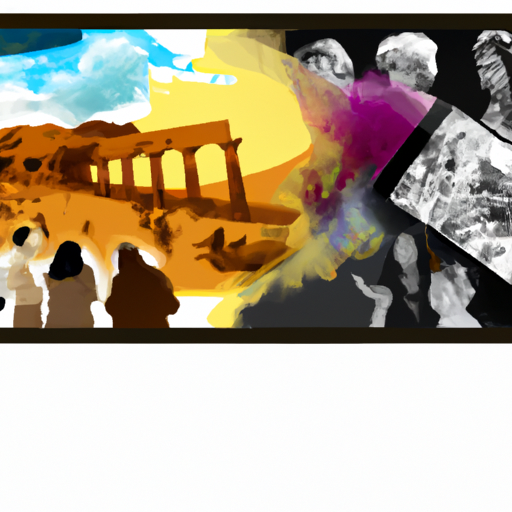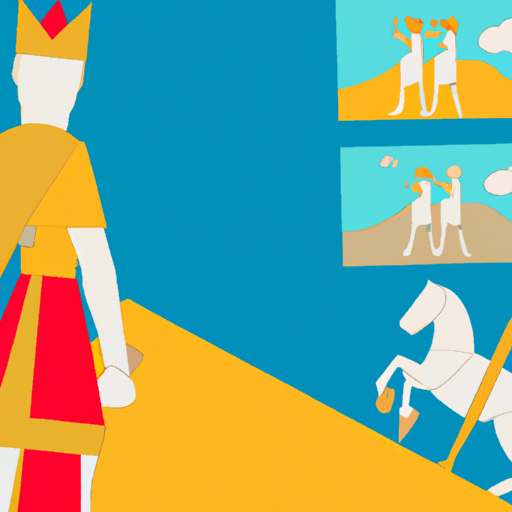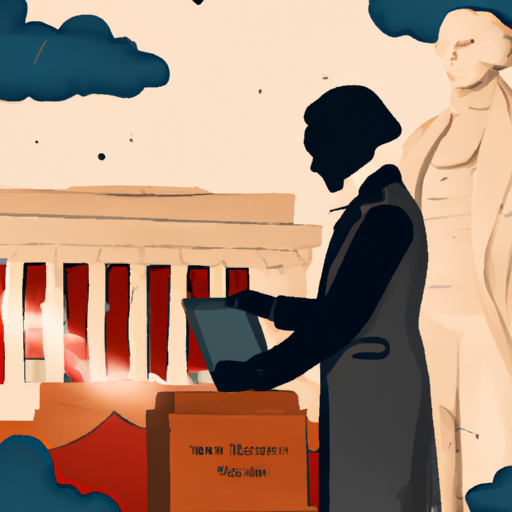A Look into the History of Mesopotamian Civilizations: The Top 5
Unlock a world of mystery and intrigue with the ancient civilizations that flourished in Mesopotamia! Discover the secrets of days gone by, explore the cultures and customs of these remarkable societies, and gain a unique insight into their remarkable legacies. Unearth forgotten stories and uncover mysteries that have been shrouded in time. Uncover the rich history of Mesopotamia and its many wonders!

A realm of the unknown and captivating, Mesopotamia’s past is one of curiousness and amazement. From the days of early civilizations to their peak of power, this region has been home to some of the most influential societies ever known. Sumerians, Akkadians, Babylonians, and Assyrians have all left their mark on humanity’s timeline. Unravel their secrets by embarking on a journey through ancient Mesopotamian history – uncovering religious practices, architectural feats, artwork, literature, and more. Delve into how these societies interacted with each other and how they’ve impacted our modern world. Embark on a thrilling expedition as you explore the mysterious history of Mesopotamia!
.
Introduction
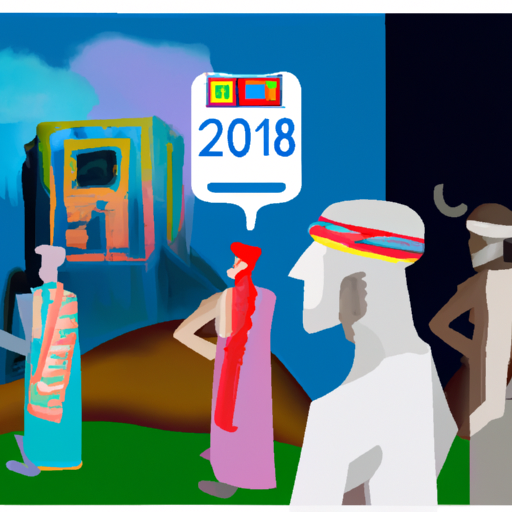
Mesopotamia’s story, one of the most venerable and influential in existence, has been credited as the birth of civilization. Spanning thousands of years, five distinct societies have taken up residence here: Sumer, Akkad, Assyria, Babylonia and Chaldea. Each brought their own culture and made significant strides in writing, literature, mathematics, astronomy and law. They even managed to create complex irrigation systems to cultivate an arid terrain. The legacy of these ancient cultures still lingers today in many aspects of contemporary life.
– History of the Mesopotamian Civilizations
Mysteriously, stretching back to the 4th millennium BCE, a region now known as Mesopotamia was settled by an enigmatic people – the Sumerians. This area, encompassing modern-day Iraq and parts of Syria, Iran and Turkey, saw some of the earliest urban societies in human history arise. In time, this land would witness the ascension and fall of a succession of powerful empires – from Akkadian to Assyrian to Babylonian to Achaemenid Persian.
The Sumerians are credited with pioneering one of the oldest forms of writing: cuneiform. Moreover, they developed an irrigation system which enabled them to cultivate crops and sustain large populations. Subsequent Semitic peoples such as the Akkadians and Babylonians left their own mark on Mesopotamia through their contributions to mathematics, astronomy, law codes, literature, art, architecture and religion.
Throughout its long history there were periods of both great prosperity and decline for Mesopotamian civilizations. In 612 BCE Babylonian forces sacked Nineveh – the capital city of the Assyrians – signifying the end of their empire. A new power then emerged: The Achaemenid Persians under Cyrus II conquered much of the region yet allowed local cultures to remain autonomous. Alexander the Great overthrew Persian rule in 331 BCE but his death four years later marked a period of decline until it was eventually absorbed into Islamic culture during the 7th century CE.
Nowadays many artifacts from ancient Mesopotamian civilization can be found in museums around the world; these objects provide us with a glimpse into an ancient past that has profoundly impacted our lives today.
– Ancient Mesopotamian Contributions to History
Awe-inspiring, the legacy of Ancient Mesopotamia is unparalleled in its magnitude and scope. From mathematics to literature, from astronomy to philosophy, this ancient civilization has had a profound impact on our modern world. In mathematics, for instance, the Babylonians developed a base-60 number system that is still used today for measuring time and angles; they were also the first to use fractions and formulas for calculating areas and volumes of various shapes. When it comes to literature, they produced some of the earliest known works such as The Epic of Gilgamesh and The Code of Hammurabi – invaluable sources which provide us with insights into their culture at the time. Lastly, their astronomical knowledge was remarkable – they developed sophisticated methods for predicting eclipses and other celestial events which were later adopted by many cultures including Greeks and Romans. All in all, Ancient Mesopotamia’s contributions have been immense – an indelible mark on history!
– The Rise and Fall of Mesopotamian Empires
Throughout the ages, Mesopotamia, located in the Middle East, has experienced a plethora of empires that have risen and fallen. From the Sumerian civilization to the Neo-Babylonian Empire, this region has seen many different rulers come and go. The Sumerians were among the first inhabitants of this area and they established a number of city-states that flourished for centuries. These city-states had strong trading relationships with each other as well as conflicts between them.
The Akkadian Empire was next in line to reign over Mesopotamia, followed by the Assyrian Empire. This powerful empire rose to prominence due to their successful military campaigns against their neighbors and they became one of the most powerful forces in the world at that time. Their advanced architecture and art were renowned, as were their ruthless tactics against those who opposed them.
Afterwards came Babylon which saw great advances in literature and science as well as an expansion of trade routes throughout the region. Unfortunately, Babylon was eventually conquered by Cyrus II of Persia in 539 BC. The Persian Achaemenid dynasty then ruled over Mesopotamia for centuries until it was taken over by Alexander the Great in 331 BC. After Alexander’s death, his empire was divided into smaller kingdoms which fought amongst themselves for control over this area before eventually leading to a decline in population and economic activity leaving it vulnerable to invasion from outside forces such as Rome and Parthia.
Mesopotamia has gone through many eras of prosperity and turmoil throughout its long history but it remains an important part of our understanding of how civilizations rise and fall over time – a reminder that no matter how powerful or prosperous an empire may be at any given moment, nothing lasts forever.
– The Impact of Mesopotamian Religions on History
Mysterious and powerful forces have been intertwined with the history of civilization since its inception. Ancient Mesopotamian religion was no exception, permeating every aspect of life from culture to politics to warfare. The gods and goddesses of this region were closely associated with certain cities or regions, forming an integral part of their power structure. Art, literature, and even epic tales were heavily influenced by these deities, while symbols of their patronage were taken into battle for protection. Even today, the impact of these beliefs can be felt in our world as we continue to be shaped by their enduring legacy.
– Archaeological Findings from Mesopotamia’s Ancient Cities
A plethora of archaeological discoveries from Mesopotamia’s ancient cities have provided an abundance of information about its history. Unearthing artifacts in places like Ur, Uruk, Nineveh, and Babylon have granted us a glimpse into the lives of those who lived there. These relics include pottery, tablets inscribed with cuneiform writing, statues, jewelry, weapons, and tools. Particular attention is drawn to artifacts from the Sumerian period (3000-2000 BC), which demonstrate an intricate civilization with a sophisticated writing system and structured government. Later relics from the Assyrian period (1300-600 BC) indicate the might of a powerful empire that had conquered much of the known world at that time.
The archaeological record also gives us knowledge about religious practices in Mesopotamia. Statues of gods and goddesses were found in many sites along with temples and other ritual structures. Cuneiform tablets provide documents of religious ceremonies as well as offerings made to these deities by their devotees. The most renowned example is The Epic of Gilgamesh which narrates the tale of a hero-king who seeks immortality after being endowed with strength by the gods.
Archaeological findings from Mesopotamia’s ancient cities offer us an incomparable view into its past and help us to gain understanding into both its history and culture. By examining these artifacts we can acquire insight into how people lived during this period as well as how their convictions molded their society.
conclusion
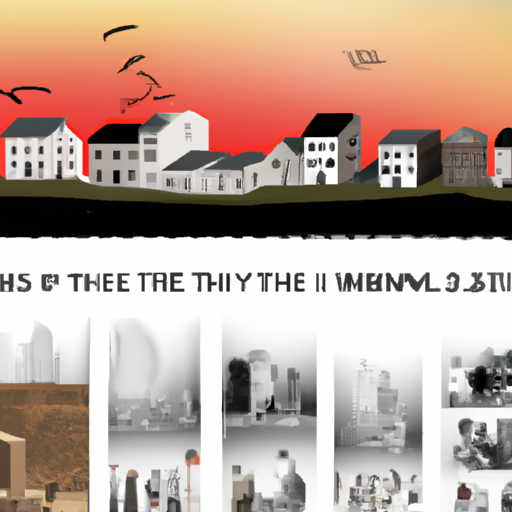
Astonishment and bewilderment encompass the far-reaching effects of the five civilizations that once flourished in Mesopotamia. These ancient societies, which include the Sumerians, Akkadians, Babylonians, Assyrians and Neo-Babylonians, have left an indelible impression on the culture and history of the region. Even now, their impact is still felt.
.
Some questions with answers
Q1: What are the 5 civilizations of Mesopotamia?
A1: The five civilizations of Mesopotamia were Sumer, Akkad, Assyria, Babylonia, and Chaldea.
Q2: When did these civilizations exist?
A2: These civilizations existed between 3500 BC and 500 BC.
Q3: What is the historical significance of these civilizations?
A3: These civilizations made significant contributions to human history in terms of art, architecture, literature, law, science and technology. They also developed early forms of writing and mathematics.
Q4: How did these civilizations influence modern society?
A4: These ancient Mesopotamian civilizations have had a lasting impact on modern society. Their contributions to language, literature, law and government have been adopted by many cultures around the world. They also helped shape our understanding of astronomy and astrology.
Q5: Where can I learn more about the history of these civilizations?
A5: You can learn more about the history of these ancient Mesopotamian civilizations through books, online resources or visiting historical sites. There are also museums dedicated to preserving their artifacts and educating visitors about their rich cultural heritage.


